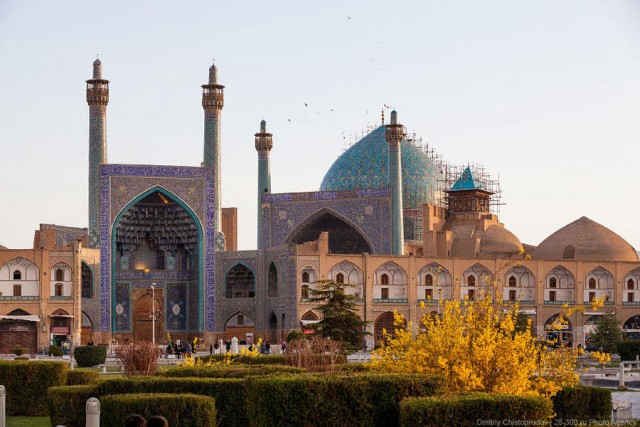Isphahan
FOR THE LAST 900 years, Isphahan (Isfahan, Esfahan) has been the capital of the province of the same name in the center of the empire that was known as Persia, now IRAN. The city lies in a basin at an altitude of 5,150 ft (1,570 m) above sea level in the foothills of the ZAGROS MOUNTAINS. The region is desert punctuated by numerous oases that were the source of sustenance for the caravans that once traversed central Asia.
Isphahan is one such oasis that lies on the banks of the Zayandeh River, 272 mi (435 km) from Tehran, Iran's capital. It is the third-largest city of Iran, with a population of about 1.5 million and was acclaimed as a beautiful city in the 16th century by its inhabitants, whose phrase Esfahan nesf-e Jahan (“Esfahan is half the world”) is frequently repeated today.

Isphahan was founded more than 2,000 years ago and because of its location and resources, it has experienced many invasions and changes of fortune. It was originally known as Aspadana and was an important center in Sassanian times, between 200 and 650 years C.E. It was taken by invading Arabs in the 7th century when Islam was established and when Isphahan became the provincial capital. Four hundred years, later it was annexed by Seljuk Turks when it rose in stature to become the capital of their empire. Like so many cities of central Asia, Isphahan was then captured by the Mongols under Genghis Khan in the 1220s and then by Tamerlane in 1338, when it was reputed that 70,000 people were killed.
Its golden age of artistic and architectural achievement began under Shah Abbas during the period of approximately 1587 to 1621 of the Safavid dynasty, which had been established in Persia in 1502. Mosques, palaces, gardens, and bridges were constructed, carpet making and artistic endeavors were encouraged, and the city increased its wealth. Its population swelled to about 600,000, and it became
one of the great metropolises of the time.
Its heyday was short-lived, as it was taken by the Afghans in 1723 with much bloodshed. It lost its status as the capital, which was bestowed on Shiraz. Following 200 years of relative peace, Russians occupied Isphahan in 1916.
Modern Isphahan is still dominated by the art and architectural heritage of Shah Abbas. Among the most famous world-class sights are Imam Square, with its bazaars, mosques, and flower gardens; the Friday Mosque, Imam Mosque, and Hakim Mosque; Madraseh-ye Emami and Madrasah-ye Mulla Abdollah; as well as numerous minarets, teahouses, mausoleums, palaces, and museums. They attract visitors from throughout world, and its handicrafts, which include carpets, silver- and copperware, and miniature paintings, are much prized. Its industries also reflect the rich agriculture of its oasis HINTERLAND and its location for trade. Iron and steel production, established in 1971, reflects a degree of industrialization in this rapidly expanding city.